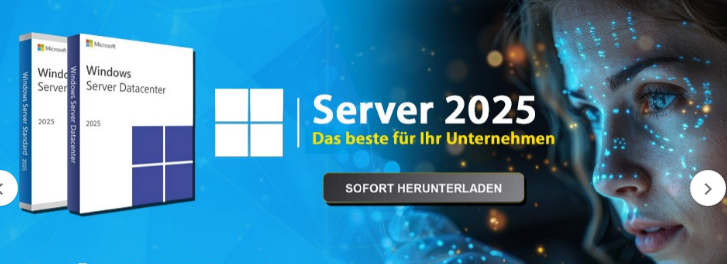A Comprehensive Guide to Installing and Using Windows Server 2025 Standard

Windows Server 2025 Standard is the latest addition to Microsoft’s server operating system lineup. It brings enhanced features and robust tools that promise improved performance, simplified administration, and optimized workflows. Whether you’re a systems administrator rolling out a new deployment or an IT enthusiast exploring its features, this guide will give you the tools you need to get started. From installation tips to key insights into maximizing its capabilities, here’s everything you need to know to confidently get Windows Server 2025 Standard up and running.
System Requirements for Windows Server 2025 Standard
Before starting the installation, ensure that your hardware meets the minimum system requirements for optimal performance.
Minimum Hardware Specifications:
• Processor: 64-bit multi-core processor at 2 GHz or faster
• RAM: Minimum of 8 GB (16 GB or higher recommended for better performance)
• Storage: At least 30 GB free disk space (additional space recommended for logs and backups)
• Network Interface Card (NIC): Gigabit Ethernet adapter
• Display: Super VGA (1024×768) or higher resolution monitor
With these requirements met, you’re ready to move forward with the installation process.
Installing Windows Server 2025 Standard
Step 1: Download and Prepare the ISO File
Begin by obtaining the official Windows Server 2025 Standard ISO file from a trusted source. Use tools like Rufus or the Media Creation Tool to create a bootable USB drive for installation. Make sure the USB drive has a minimum capacity of 8 GB and is formatted correctly.
Step 2: Boot from USB Drive
Insert the bootable USB drive into the system and start the machine. Access your computer’s BIOS/UEFI settings by pressing the required key during boot (often Del, F2, or F12). Change the boot priority to select the USB device and restart the system.
Step 3: Start Installation
Once the installer launches, follow these steps:
• Select your language, time, and keyboard preferences.
• Click “Install Now” on the setup screen.
• Enter the product key when prompted, or skip this step to activate later.
• Choose the Server Standard version and decide whether you want the desktop experience or the Standard Server Core version.
• Accept the license terms and choose “Custom Installation” for a fresh setup.
Step 4: Configure Partitions
If installing on a new hard drive, format the disk and create partitions as needed. Ensure that the system partition has sufficient storage for future updates and system files.
Step 5: Complete Installation
Once installation begins, the system will copy files, install features, and reboot several times. After the process completes, you’ll be taken to the setup wizard to create the administrator account and configure the server settings.
Key Features You Need to Explore in Windows Server 2025 Standard
• Enhanced Security: Windows Server 2025 delivers advanced threat protection and Secured-Core server capabilities to safeguard your network.
• Storage Performance Boost: Improved storage migration services and optimized data deduplication features make file management more seamless than before.
• Simplified Administration: Admin Center updates provide enhanced control over server monitoring, task automation, and system alerts.
• Edge Infrastructure: Support for containerized applications and hybrid cloud management ensures versatility for modern workloads.
Wrapping Up
Windows Server 2025 Standard sets a new benchmark for server operating systems with its advanced functionality and powerful tools. Following the installation steps outlined above will put you on the right path to leveraging its capabilities in your IT environment. From improved security to better administration tools, the new features are designed to drive efficiency and enhance your IT infrastructure. Explore the system, experiment with its capabilities, and take full advantage of what it has to offer for modern server management needs.
